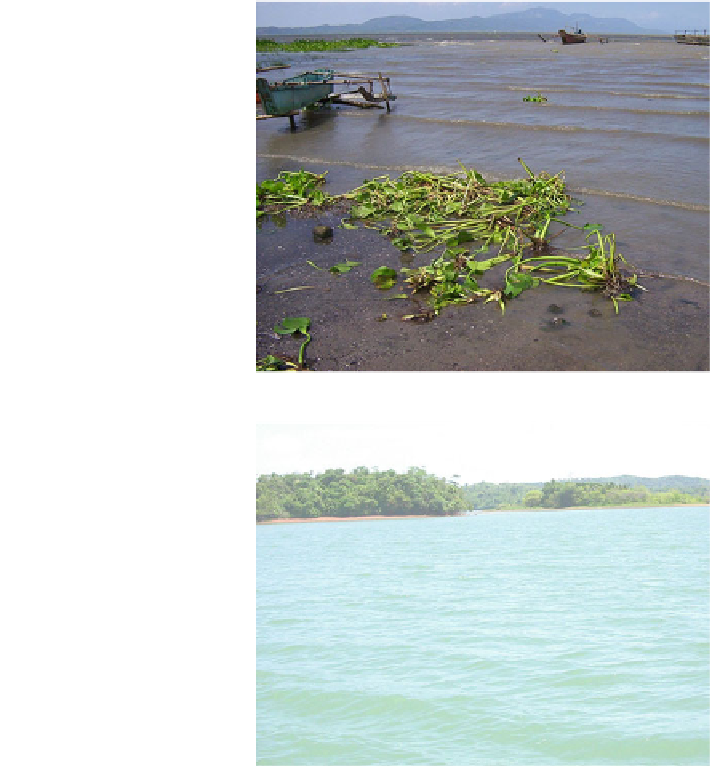Environmental Engineering Reference
In-Depth Information
Fig. 1 A portion of Laguna
de bay near a duck farm in
Victoria, Laguna
Fig. 2 A portion of Lake
Caliraya, Laguna where the
clean water was sampled
dye (Fig.
3
). The uninoculated polluted water with Congo red was not decolorized,
even if resident organisms in the polluted water were present.
No decolorization by both monocultures and consortia was observed in the
inoculated and uninoculated clean water with Congo red (Fig.
4
). However, CRDB
and consortia enriched in polluted water with Congo red were able to decolorize the
dye. The presence of other organic matter in the polluted water could have helped in
the degradation of the dye. Agricultural waste from poultry farming is the source of
organic and inorganic pollutants in surface water and ground water (Krantz and
Kifferstein
2007
). Presence of resident microorganisms in the polluted water could
also have helped in the degradation of the dye, but these organisms were not able to
decolorize the dye by themselves since the uninoculated polluted water with Congo
red was not decolorized. This could be possible because the microorganisms
present in the polluted water do not produce the enzyme that could reduce azo dyes.

Search WWH ::

Custom Search